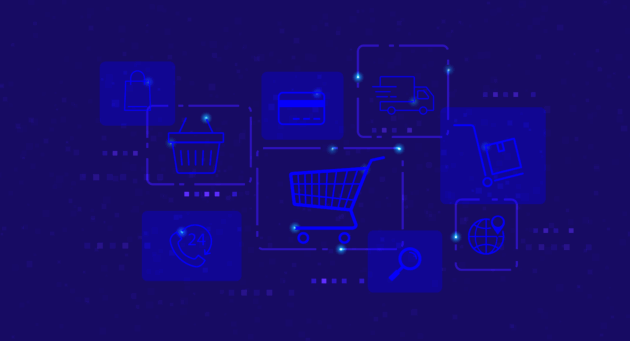2021 was a year of adaptation — with consumers adjusting to new ways of shopping, browsing, and buying after experiencing major disruption in 2020. And while change isn’t always easy, many fears gradually faded as what was once new became comfortable. That comfort, coupled with the convergence of commerce and innovation, makes me think that if 2021 was the year of adaptation, then 2022 is the year of acceleration.
Even with continued uncertainty around the pandemic, this is a year where everyone will build momentum in their lives. Consumers will carry out plans and life changes that may have been delayed due to the start of the pandemic, and marketers will move forward with new approaches that best serve their customers’ lives — while also future-proofing their strategies for advertising’s next chapter.
As we begin this new year, here are four predictions to keep in mind for strategic planning:
1. The rise in ecommerce will keep fueling the open internet
Ecommerce took off in 2020, but its growth is still going strong. eMarketer predicts ecommerce sales will continue double-digit growth through 2023, taking a larger share of total retail sales worldwide1. And marketers are following suit with their ad spend. eMarketer cites that the end of 2021 marked the time when worldwide ad spending grew faster than at any other point since their company began tracking it 10 years ago2.
But ecommerce isn’t just about making purchases. According to our Consumer Sentiment Survey, seven in 10 (68% of consumers) confirmed that prior to buying products they’ve never bought before or important products, they frequently read informative articles on the open internet3. According to research by The Harris Poll, consumers say they spend 66% of their time online on the open internet, which reinforces the important role it plays in the consumer journey4.
However, the same Harris Poll study shows there’s a disconnect with marketers, since they’re only allocating 37% of their ad spend to the open internet (with the remaining 63% going to walled gardens)4. This is a missed opportunity for marketers to ensure their investments are supporting the environments where their consumers spend the most time.
2. First-party data will fuel marketers’ strategies
With ongoing changes to privacy regulations, as well as shifting addressability capabilities in the industry, marketers are going to keep focusing on amassing as much first-party data as possible — and activating it in the most impactful ways. In another Criteo survey of more than 900 marketers worldwide, eight out of 10 (80%) told us that they believe access to first-party data will be crucial to success in digital marketing in the years to come5.
But they’re not going to do it alone; marketers expect tech and agency partners as well as publishers to play a major role in helping them navigate the future of addressability. Close to eight out of 10 (79%) say that tech partners will be key to helping them manage data changes5. This shows that while the path forward for addressability may be complex, marketers are making it a priority and partnering with those who can help them find success in both the short-term and long-term future.
3. Commerce media will take center stage
The rise of ecommerce and the industry focus on first-party data have helped accelerate the use of commerce media. Commerce media is a new approach to digital advertising that combines commerce data and intelligence to reach and engage consumers throughout their shopping journey and help marketers and media owners drive commerce outcomes (sales, revenue, leads). It goes beyond the targeting that we know today since it’s built on great depths of durable, first-party commerce data to inform every engagement.
Commerce media enables marketers to reach their ideal consumers based on what their specific needs are across all channels and with the best-suited format that resonates with them. It also provides consumers with better online experiences, since it only delivers ads for products or services that they’ve actively shown an interest in, and only from advertisers that they have consented to.
4. Video and connected TV (CTV) will keep growing
Video and CTV will continue to be top of mind for marketers in 2022. In our State of Video and Connected TV survey of more than 9,000 video viewers, three out of five respondents revealed that they watch more paid video streaming services such as Netflix, Hulu, and Disney+ now than they did pre-pandemic6.
This study also showed that two out of three viewers stream paid video services for more than five hours per week and more than one-third plan to watch more paid or free video streaming services in 20226. Video ads also seem to be the favorite type of ad among consumers with 60% preferring video ads over those that show only text. In 2022 it will serve marketers well to lean into the connection opportunities that sight, sound, and motion can bring to their marketing mix.
Adopting a “test and learn” approach in 2022
With the start of a new year comes the opportunity to grow as people and as marketers. And while there are still many unknowns around the pandemic and the future of advertising, taking a test-and-learn approach ensures that we’re growing, no matter what. And these learnings will speed up that acceleration forward to optimize strategies, refine business models, and add another layer of futureproofing to marketers’ plans.
To help our clients achieve this approach, Criteo also took a major step in the acceleration of our Commerce Media Platform strategy by announcing that we’ve entered into exclusive negotiations to acquire IPONWEB, a global AI, data, and engineering company building advanced technology for marketers and media owners. This acquisition would perfectly support our strategy to deliver commerce outcomes at scale across the open internet.
For more insights from Criteo executives, read the latest post from our CEO, Megan Clarken, on why the 2021 holiday season was the most crucial moment for marketers yet.
Access more trends and consumer advertising insights by downloading our latest Shopper Story 2022 report:
1eMarketer, August 19, 2021
2eMarketer, November 23, 2021, Worldwide Digital Ad Spending Year-End Update
3Criteo Consumer Sentiment Index, Global (Australia, France, Germany, India, Italy, Japan, South Korea, Spain, UK, US), November 2021, N=3805
4The Harris Poll and OpenX, “The open web vs. the walled garden”, 2020
5Criteo Google Announcement Survey, Global (Australia, France, Germany, Japan, South Korea, the United Kingdom and the United States), July-October 2021, N=914 Marketers
6Criteo State of Video & Connected TV Survey, Global (Australia, France, Germany, Italy, India, Japan, South Korea, UK, US), April-June 2021, N=9218. Survey respondents are consumers who own a smart TV or an internet TV device and watch a paid or free video streaming service

















